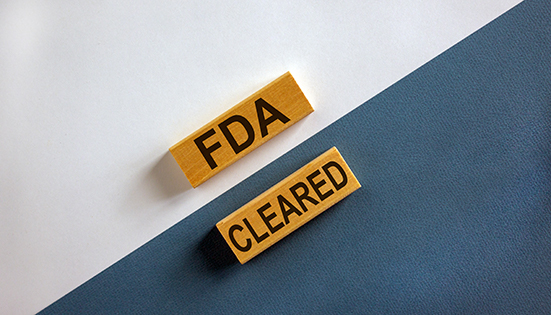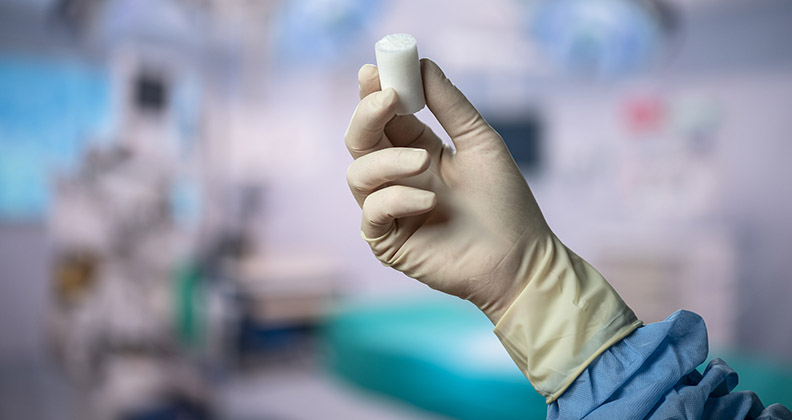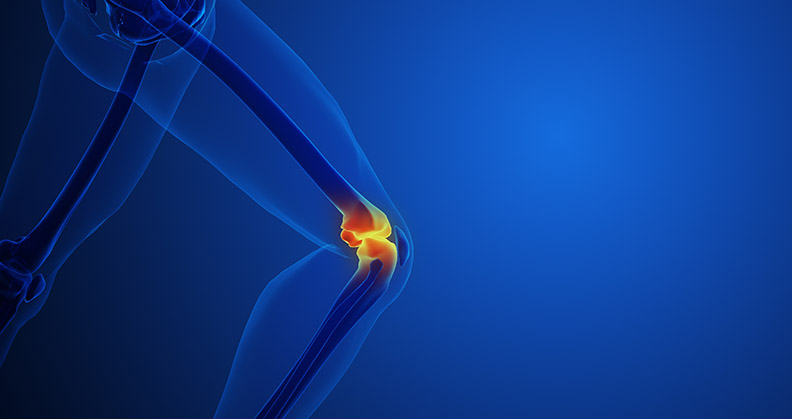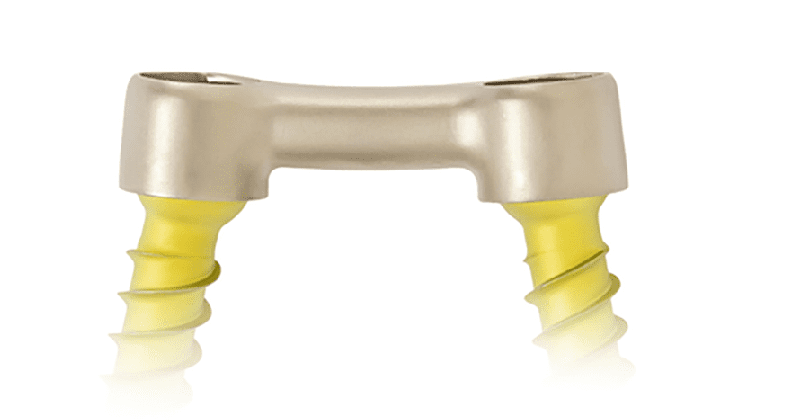
Orthopedic manufacturers continue to come up with innovative ways to advance patient care. Here’s a look at several new technologies designed to enhance spine surgery, improve hip replacement outcomes and stabilize fractures and bone deformities.
ATEC Evolves the Lateral TransPsoas Approach
ATEC is introducing innovation designed to improve lateral spine surgery. The company has applied lessons from Prone TransPsoas (PTP) to evolve the Lateral TransPsoas (LTP) and the orthogonal Midline ALIF approaches with novel technology designed to advance treatment of L3 through S1, the most commonly treated levels of the spine.
ATEC LTP, which is supported by lateral and neuromonitoring expertise, has been designed with approach-specific technology, including a novel positioner and retractor that integrate seamlessly with SafeOp Neuromonitoring.
ATEC’s SafeOp Neural InformatiX System delivers objective, intraoperative nerve health information into procedures. SafeOp is designed with automated electromyography and somatosensory evoked potentials to provide surgeons with actionable information regarding the location and the health of nerves at risk during surgery. The feature addresses the most common complication associated with lateral approaches.
The Sigma-LTP Access System, also central to ATEC LTP, is a retractor designed to maximize efficiency, improve reproducibility and achieve exposure goals with improved rigidity, customizable aperture and more intuitive orthogonality.
ATEC LTP includes a patient positioner designed to improve orthogonality and increase operating room efficiency. Utilizing a familiar Jackson frame, the positioner allows surgeons to safely accomplish LTP, midline ALIF and posterior fixation approaches without needing to re-drape or re-position patients.
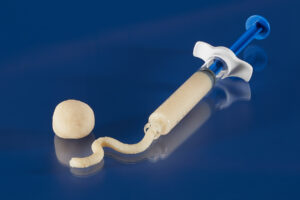
Legacy DBM preserves the inherent growth factors natural to the bone.
First Implants of Orthofix Legacy DBM
Orthofix Medical commenced full market release and first implants of Legacy Demineralized Bone Matrix (DBM), a putty for filling voids or gaps in bony defects or traumatic injuries of the spine, pelvis and extremities. Legacy DBM is processed by MTF Biologics to preserve the inherent growth factors natural to the bone.
Legacy DBM has a puttylike consistency that features desirable handling and can be used as an extender with autograft or allograft tissue or bone marrow aspirate.
A complementary addition to the biologics offered by Orthofix through its exclusive partnership with MTF Biologics, Legacy DBM joins the recently introduced Virtuos Lyograft, Trinity Elite, FiberFuse Advanced and FiberFuse Strip allografts, and the AlloQuent structural allograft portfolio.
Orthofix also markets and distributes the Opus BA bioactive bone graft, Opus Mg Set bone void filler, Opus One osteoconductive scaffold, and the O-Genesis graft delivery system. The comprehensive portfolio gives surgeons the ability to select the best option to meet their procedural and patient needs.
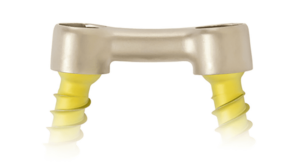
The PressON is smaller and stronger than traditional systems.
Nexus Spine Launches PressON PLIF
Nexus Spine commenced the full commercial launch of its PressON posterior lumbar fixation system. PressON features rods that press onto pedicle screws rather than attach using set screws. This novel design is approximately one-quarter the size of traditional systems, is reportedly faster to implant and biomechanically stronger, eliminates the possibility of set screw loosening and allows for intraoperative construction of patient-specific rods. The full market release of the technology adds to the company’s growing compliant mechanism-based portfolio, including its line of flexible Tranquil titanium interbody fusion devices.
Nexus’s use of compliant mechanism technology allows for the creation of novel designs that behave in fundamentally new ways to solve unmet clinical needs. Compliant mechanisms function by bending rather than sliding. As an example, PressON incorporates flexible bores that are stretched over pedicle screw heads during implantation. The resulting elastic interference fit between screw and rod does not use traditional set screws, which have been shown to loosen during implantation and postoperatively.
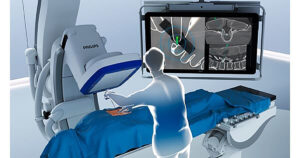
ClarifEye helps surgeons perform more precise and safer surgeries to treat spine deformities.
Philips Expands Rollout of ClarifEye Surgical Navigation
Philips expanded the rollout of its augmented reality (AR) surgical navigation solution, ClarifEye, to Japan. Installed on a Philips interventional X-ray system in a hybrid operating room, ClarifEye has been used to successfully treat patients with spinal stenosis and scoliosis via minimally invasive image-guided procedures.
ClarifEye combines 2D and 3D visualizations at low X-ray doses with 3D AR navigation in one system. It enables surgeons to define and navigate critical trajectories for precise device placement while avoiding damage to fragile neurological and vascular structures close to the patient’s spine.
ClarifEye’s live-video computer vision and AR technology uses non-invasive position markers applied to the patient’s skin to track patient positioning, and overlays the resultant live video onto a 3D cone-beam CT of the patient’s spinal column. The technology allows surgeons to view the outside and inside of the patient in the same image, along with the planned and real-time trajectory of a ClarifEye needle, without the need for live X-ray imaging. The system eliminates cumbersome reference frames used by other systems, giving surgeons unimpeded access to the patient.
Published data demonstrated that in open deformity cases, ClarifEye had a better accuracy than similar surgeries performed by the same surgeon with no help from intra-operative navigation.
Stryker Launches New Gamma4 Hip Fracture Nail
The Gamma4 System represents the next generation of Stryker’s intramedullary nailing system. Gamma4 is indicated for the treatment of stable and unstable fractures as well as for the stabilization of bones and correction of bone deformities in the intracapsular, trochanteric, subtrochanteric and shaft regions of the femur (including osteoporotic and osteopenic bone).
The system features:
- Improved performance: With the Precision Pin, the potential for skiving is reduced by 66% compared to a standard ∅3.2 k-wire.
- A redefined nail design: The SOMA-designed nail features length-dependent RoC, a shortened proximal body and a chamfered distal tip with a pre-inserted set screw.
- An integrated instrument platform: The streamlined portfolio of all Stryker nails now works off the existing IMN Basic set.
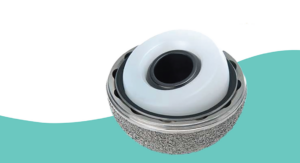
The OR3O Dual Mobility System improves the outcomes of hip replacement surgery.
Smith+Nephew Launches OR3O Dual Mobility System in Japan
Smith+Nephew commenced the launch in Japan of the OR3O Dual Mobility System for use in primary and revision hip replacement. Compared with traditional solutions, dual mobility implants have a small diameter femoral head that locks into a larger polyethylene insert, which is designed to increase stability, reduce dislocation risk and offer improved range of motion.
OR3O incorporates Smith+Nephew’s OXINIUM DH (Diffusion Hardened) advanced bearing surface for its liner, and proprietary OXINIUM on XLPE for its femoral head and polyethylene inserts. This eliminates both the modular CoCr liner and/or CoCr head ball from the construct, reducing wear and corrosion risks that have been associated with the alloy.
OXINIUM DH is a variation of Smith+Nephew’s OXINIUM Technology platform that increases the depth of hardening through an additive manufacturing process.
JAV
Julie A. Vetalice is ORTHOWORLD's Editorial Assistant. She has covered the orthopedic industry for over 20 years, having joined the company in 1999.


